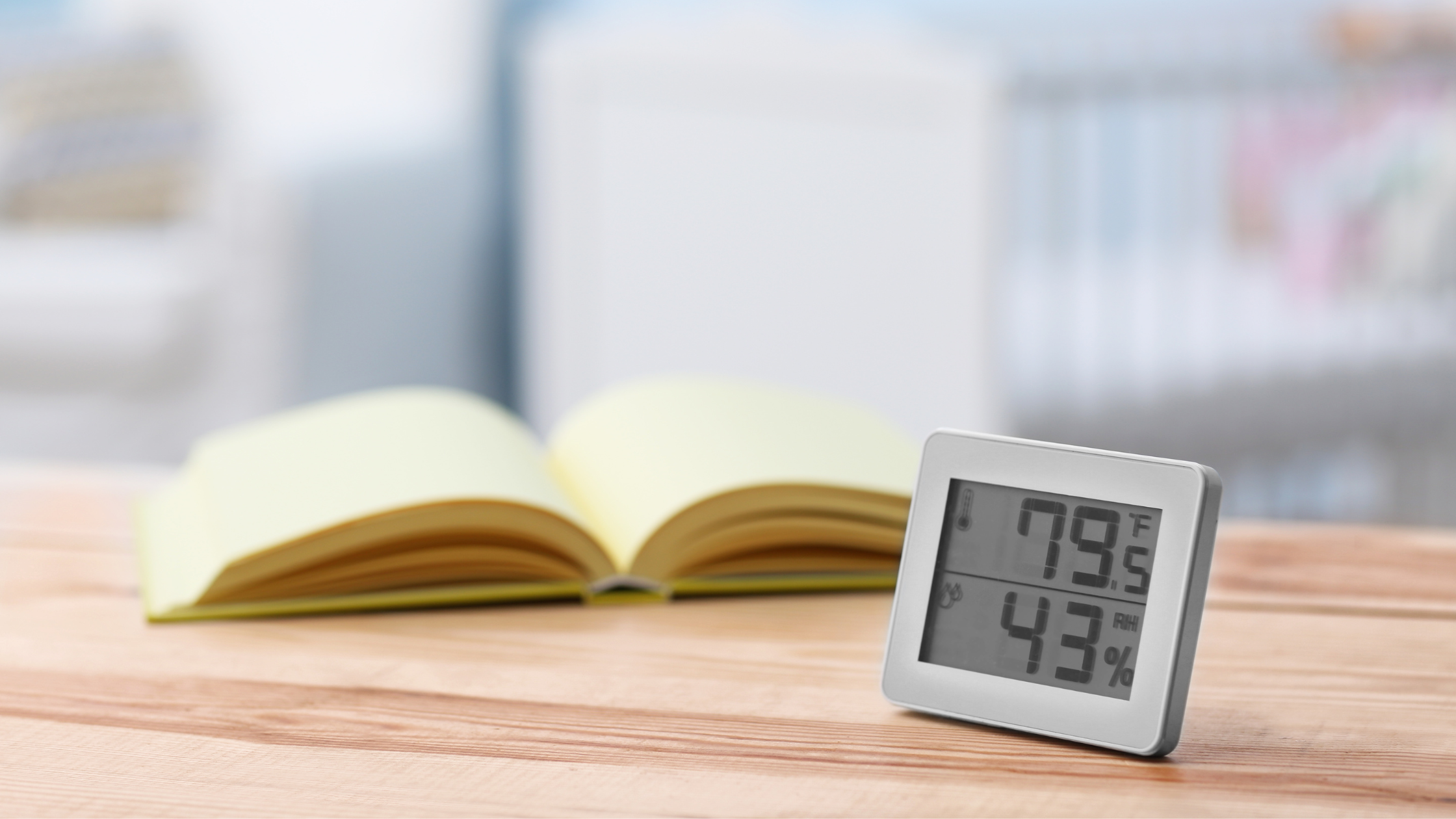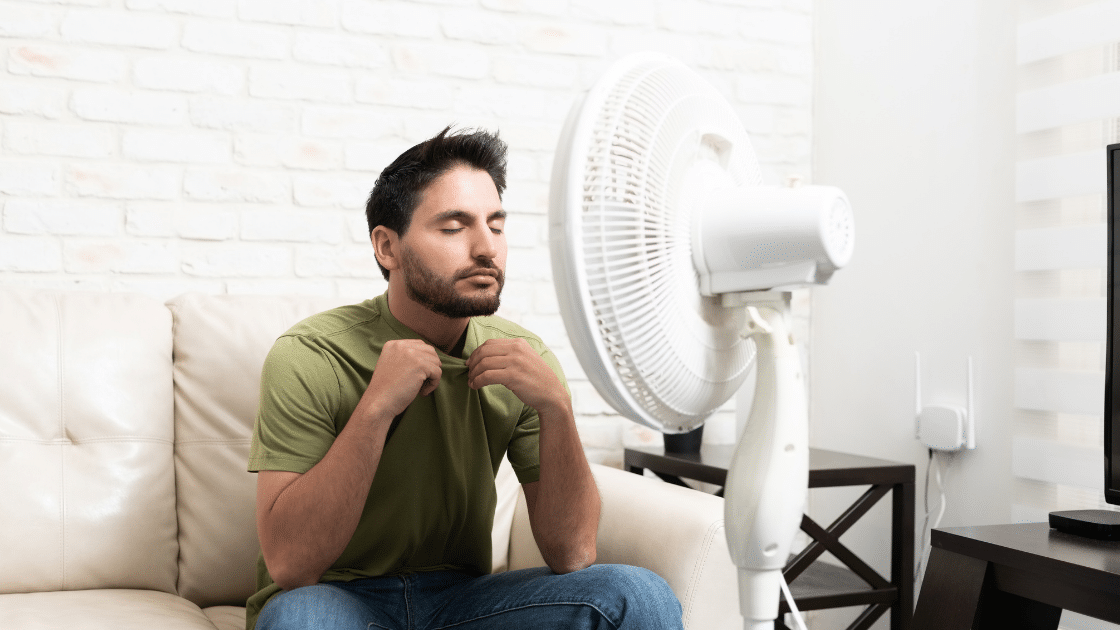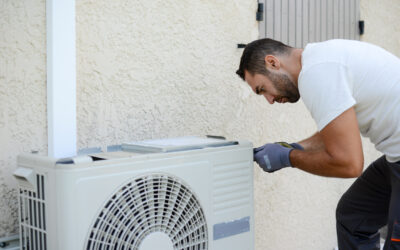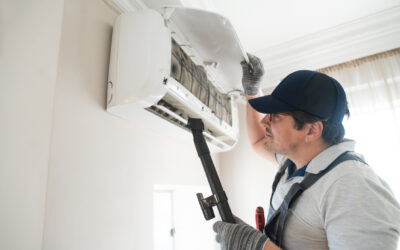Excess moisture in your home can cause a variety of problems, from minor annoyances like musty odors to more serious issues like mold growth, structural damage, and health problems. If you live in a humid climate (like Hampton Roads) a whole home dehumidifier might be something you consider adding to your HVAC system.
Problems With Moisture In Your Home
Especially during spring and summer months in Hampton Roads as the temperatures increase, so does the humidity. With high humidity levels, more steam and moisture in the air outside can cause above-average humidity levels within your home. A healthy range of humidity in your home’s air is between 35-50%. When interior humidity levels surpass this healthy range, excess moisture in your home’s air can cause several problems.
Causes respiratory issues
For the people living in your home, an excess of moisture in the air can cause respiratory issues, especially for any family members suffering from mold mildew allergies or asthma. Mold and mildew thrive in warm, moist conditions. If the air in your home is moist, it is a perfect breeding ground for mold and mildew. Humid air more readily carries pollen, mold spores and other pathogens which can irritate your family’s respiratory system. This can be especially problematic for family members suffering from allergies related to mold and mildew or breathing challenges such as asthma.
Causes your home to feel warmer and makes your HVAC unit work harder
Whenever your HVAC system works harder, that means a more costly utility bill and more wear and tear on your cooling system. Changes in the moisture in your home’s air can also impact wallpaper and furniture in your home.
Increases condensation on windows and in air ducts
This condensation could cause issues with windows or air ducts. Window condensation is problematic in that it can lead to mold and mildew growth. Both unsightly and causing a musky odor. Similarly, condensation in your home’s air ducts, especially happens to the ductwork’s metal shell, can be a perfect breeding ground for mold and mildew. Growth in the ductwork can lead to mold spreading within your walls and sending the musky odor throughout your home.
Warps and rots wooden furniture and wood structures
Wood is a material that is especially impacted by the moisture in the air. Wood tends to contract or expand based on changes in the air’s moisture – causing it to warp or crack.
The best way to efficiently remove excess moisture from your home’s air is by adding a whole home dehumidifier to your HVAC system.
What Is A Whole Home Dehumidifier?
A whole home dehumidifier switches on when your home’s relative humidity level rises to a preset threshold.
A whole home dehumidifier works with your current HVAC system to lower the moisture in your home’s air when needed. How a whole home dehumidifier works is to decrease excess moisture in your home’s air by having all the air that blows through your home’s ductwork pass through the whole house dehumidifier first. A whole home dehumidifier removes moisture from your home’s air the same way that your central air conditioner does. It cools the air through and captures the condensation that is drawn from the cooling air. The condensation is then expelled from your home through either a reservoir or an outflowing drain. Unlike air conditioners, whole house dehumidifiers returned the cooled, dried air back into your home.
Because whole home dehumidifiers are incorporated with your HVAC system, the moisture in your home’s air can be controlled through a thermostat or a humidistat. By using your thermostat, you can manage the moisture in your home and even set your preferences to be adjusted automatically to your liking.
Installing And Maintaining A Whole Home Dehumidifier
While installing a whole home dehumidifier is not a DIY project, it is a simple process as whole home dehumidifiers connect with your home’s HVAC system. Whole home dehumidifiers can be added to most existing HVAC systems or can be included when you upgrade to a new HVAC system.

Maintenance of your whole home dehumidifier is minimal. As with your home’s cooling system, you will want to monitor the removal of excess moisture by checking and cleaning the reservoir tank or condensation drain a couple of times a year. For the most part, dehumidifiers require very minimal maintenance. Your expert service technician can maintain your whole home dehumidifier as part of your regular HVAC tune-up appointment.
Benefits Of A Whole Home Dehumidifier
A whole home dehumidifier is an out-of-sight, out-of-mind add-on to your HVAC system.
While your home’s air conditioning unit should work to remove excess moisture from your home’s air, it won’t remove moisture in the air when it is not active, in the shoulder seasons. In the fall and winter months, when your air conditioner is not active, you may require another instrument to reduce humidity in your home.
A home dehumidifier can reduce the strain on your home’s air conditioner. In the highest humidity months, a whole home dehumidifier can lighten the burden on your AC of removing moisture in the air.
A home dehumidifier reduces the likelihood of mold and mildew growing in your home. The lack of mold and mildew growth in your home can alleviate potential illnesses or breathing issues for family members with allergies or asthma. Reducing the mildew and mold in your home will also reduce the musty odor that mark these issues.
Protect furniture and wood from moisture in your home. Excess moisture in your home can cause wood to warp or even rot. Removing excess moisture in your home’s air can also reduce the likelihood of paint or wallpaper from peeling.
A whole home dehumidifier serves to make your home more comfortable, automatically. Because whole-home dehumidifiers allow you to pre-select a humidity level to maintain, just like setting the temperature of your HVAC unit, the dehumidifier will automatically click on or off to maintain that humidity level. This also means that the whole-home dehumidifier is only on when the humidity level demands it, which saves on energy uses and utility costs. ENERGY STAR certified models are available for whole home dehumidifiers and often come with rebates!
Energy Efficiency Rebates
Learn how you could save money with a more energy-efficient home system, receive tax credits to underwrite the cost, and receive rebate funds too.
Unlike portable dehumidifiers, you will never have to take out, store, or move your whole home dehumidifier from room to room. You will also not need to clean a whole dehumidifier frequently nor beware of bacterial growth (as you do a portable dehumidifier).
Other Ways To Remove Moisture From Your Home
Ensure That Your Home’s Air Conditioner Is Properly Sized For Your Home
With an air conditioner that is sized properly for your home, it should do a fair job of removing excess humidity. If your home’s HVAC unit is too large or too small for your home’s square footage then it could be adding to the issue of excess moisture in your home’s air.
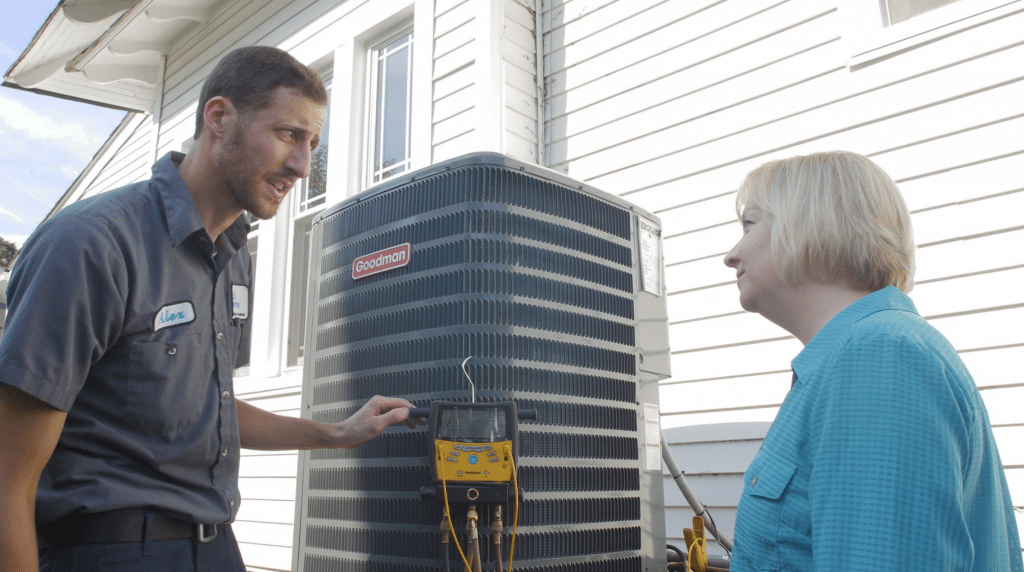
Cultivate Houseplants to Improve Air Quality
Plants are nature’s air purifiers. Thanks to their unique photosynthesis and conversion of carbon dioxide to oxygen, houseplants help naturally purify the air in your home. Houseplants can also help absorb the moisture in your home’s air.

Utilize Fans and Ventilation Fans
Ceiling and stand-up fans in your home serve to circulate the air in your home. The increase in air circulation can help in combatting humidity by facilitating evaporation as the air circulates. Ventilation fans especially in bathrooms and over stoves can serve to draw out the moisture in areas in your home that are prone to excess moisture.
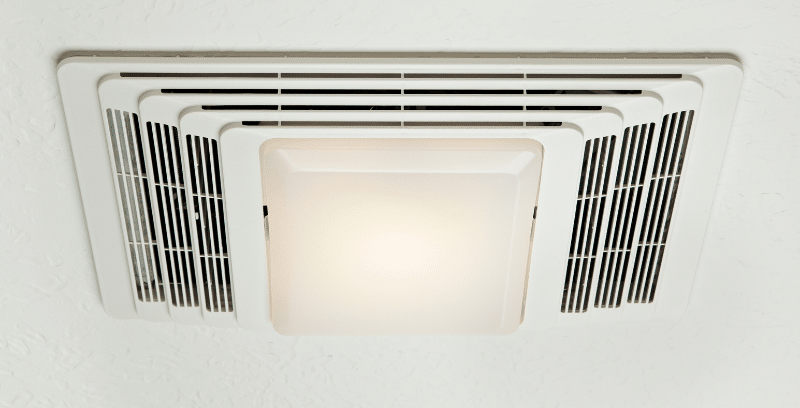
Dehumidifier FAQs
How do you test the humidity in your home?
The best way to test the humidity in your home is with a hygrometer. A hygrometer is a device that specifically measures humidity. It’s an inexpensive and easy way to check the humidity level in your home. You can find hygrometers at most hardware stores and online retailers. Some hygrometers are digital, while others use a dial to display the humidity level.
Some smart thermostats also monitor the humidity level in your home. Learn more about the benefits of upgrading your home’s thermostat.
When should you use a dehumidifier in your home?
You should use a dehumidifier in your home if your humidity levels exceed the average levels (35-50%).
How long does it take for a whole house dehumidifier to work?
A properly sized whole-home dehumidifier can take up to 12 hours to get your home to a desired humidity level.
What size dehumidifier do I need for my home?
Determining the correct size of a dehumidifier to add to your HVAC unit can be a bit tricky, as it depends on several factors such as the size of your home, the level of humidity, and the specific requirements of your HVAC system.
It’s best to consult an HVAC technician to determine the best-sized dehumidifier for your home.
Call The Experts
Contact Smith & Keene’s expert HVAC team today. Our team of trained local HVAC technicians can guide you in selecting the ideal whole home dehumidifier to maintain proper humidity levels in the air in your home.
Contact Us
When your system isn't working, IT'S TIME to contact the HVAC experts in Hampton Roads, Smith & Keene



